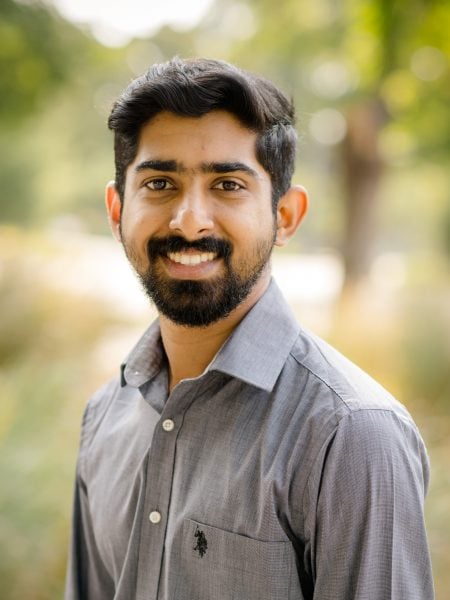
From an early age, I was interested in automobiles and machines. So, when the time came to decide on which path to choose for my undergrad degree, I chose Mechanical Engineering without any doubt. That eventually led me to Michigan Tech to pursue a master’s degree in mechanical engineering. At Michigan Tech, I got the opportunity to work with Dr. Darrell Robinette on Connected Vehicle research as part of the Department of Energy’s ARPA-E NEXTCAR project. This project opened a whole new world of opportunities into the possibilities and the impact vehicle connectivity and automation could have on our daily lives. So, with some inspiration from Dr. Robinette and Dr. Jeffrey Naber, as my co-advisors, I decided to pursue a doctoral degree in Mechanical Engineering with a focus on leveraging vehicle connectivity and automation to improve energy efficiency of passenger vehicles.
On my PhD journey, I got the opportunity to work on the Department of Energy’s “Energy Optimization of Light and Heavy-Duty Vehicle Cohorts of Mixed Connectivity, Automation and Propulsion System Capabilities via Meshed V2V-V2I and Expanded Data Sharing” where we demonstrated on-track, the energy savings potential of multi-vehicle cohorts using connectivity and automation. I was also lucky to be part of the Department of Energy’s “Connected and Automated Vehicle Model Validation” project and the General Motors sponsored SAE AutoDrive Challenge II. Along with this, I also got the opportunity to spend six months as a Research Intern at General Motors’ Software Defined Vehicle Research Laboratory, where I worked on implementing perception systems and multi-object tracking algorithms for a simulation environment.
For my PhD research, I investigated the energy saving potential of various vehicle cohort combinations that could have while driving on a limited access highway, leveraging connectivity to optimize powertrain operation on various hybrid electric vehicles and train a neural network to use connected vehicle information to chart a course through an urban driving environment.
I want to use this opportunity to express my sincere gratitude towards Graduate School, dean and the Graduate Dean Awards Advisory Panel for awarding me the Finishing Fellowship for the Summer of 2025. This fellowship will greatly help me complete my doctoral research and extend my professional career. Along with that, I would like to thank the Department of Energy’s ARPA-E and Vehicle Technologies Office for providing support throughout my PhD along with General Motors and the Society of Automotive Engineers. I am also deeply grateful to my co-advisors, Dr. Darrell Robinette and Dr. Jeffrey Naber for their support and guidance throughout the years at Michigan Tech.